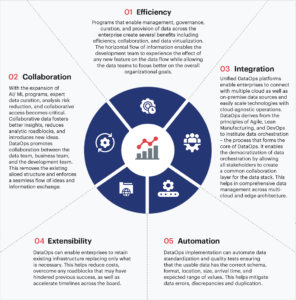Implementing Data Automation
Data Automation
In the digital age, it is vital to implement data automation in order to gain insight from your big data. Data automation helps organisations consolidate and organize data so they can make better decisions. It can also save organisations time, money, and resources. A streamlined process enables organisations to complete business processes faster and more efficiently.
Data automation may involve a variety of techniques. For instance, it may involve the implementation of a real-time ETL (extract, transform, and load) data pipeline. This method enables organisations to centralize their data in a centralized data warehouse. Using an automated data processing system can reduce the amount of human intervention in the data analysis process, and remove the possibility of errors. Similarly, it can free up data teams to focus on the more complex and higher-level tasks, while still ensuring the integrity of the organisation’s data.

Some examples of data automation include generating leads using social media and email, monitoring financial transactions, and tracking inventory levels. These can all be automated in order to save time and increase efficiency. And it’s not just large organisations that can benefit from this technology. Small to medium sized businesses can too.
Implementing Data Automation
Another possible benefit of data automation is improving customer service and reducing the cost of office space and employee salaries. A streamlined process means that data teams don’t have to spend their time manually creating and updating tickets or Slack channels. The same technology can be used to enable businesses to interact with their customers in real time.
Implementing data automation can also help organisations adopt a more systematic approach to data transformation. There are several ways to do this, with some of the most common being to implement a custom script. Scripts are more flexible, but they can be a bit resource-intensive.
Other methods of data automation involve collecting and organizing information from a wide range of sources. For example, a small to mid-sized company may find it difficult to gather and present data in a manner that is easy for users to understand. By using an automated process, it is possible to create meaningful data based on the data points that are most important to an organisation.
A well-implemented data automation solution can prove to be a major asset to an organisation. It can also allow organisations to respond to the demands of their customers and increase revenue. Businesses that have implemented the appropriate technology are also able to stand out from their competitors.
As a result, there are numerous tools and solutions that exist to help organisations implement data automation. One such tool is iPaaS (Integration Platform as a Service). Embedded iPaaS is a solution that offers dynamic two-way integration between data systems. Similarly, there are other solutions that help organisations with data discovery and data visualization.
Although there are many types of data automation, it is important to focus on the most important tasks. In addition to the obvious advantages, data automation can improve the efficiency of your organisation and enable your team to focus on higher-level tasks.